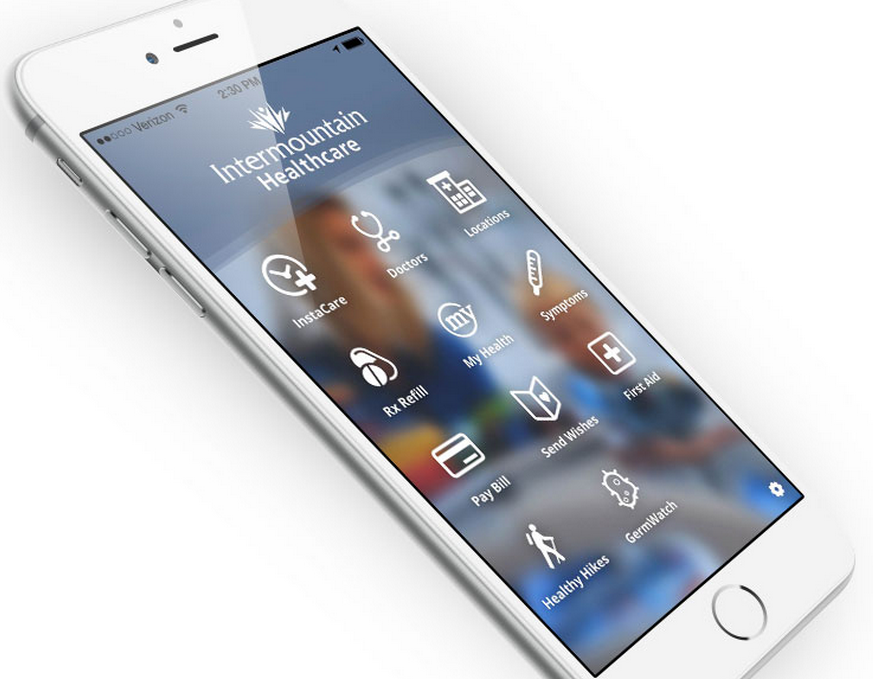 NEWS
NEWS
 NEWS
NEWS
 NEWS
NEWS
Since its founding in 1975, Intermountain Healthcare‘s goal has been to provide the highest quality care, but today cost control is also more important than ever. “For years healthcare’s been running at an almost unsustainable cost as a collective industry. We want to deliver the highest quality healthcare always but at a sustainable cost,” said Todd Dunn, director of innovation for Intermountain’s Healthcare Transformation Laboratory. The Salt Lake City-based not-for-profit health network has 22 hospitals totaling 2,688 beds and more than 185 clinics serving a population of more than 2 million people across Utah and southeastern Idaho. It’s looking at cloud, mobile, data analysis and new tools for software development to help control cost and improve outcomes.
Like many healthcare providers, Intermountain’s model is changing from treatment to “wellness, helping people stay out of the hospital,” Dunn said. Cloud and mobile apps in particular have the potential to empower that transition from intervention to prevention.
Hosted EHR
Today Cerner Corp. hosts Intermountain Healthcare’s Electronic Health Record (EHR) in the cloud, making the records of all Intermountain patients accessible to clinicians across the provider’s extensive network. When a patient arrives at one of Intermountain’s hospitals, the staff can see that patient’s entire medical history, even if the patient has never been in that facility before. Knowing about such things as patient drug allergies can save lives. Intermountain uses Oracle’s PeopleSoft for its ERP, facilitating cost management across the system. However, it also maintains its own data centers, and “we take our stewardship of patients’ data extremely seriously,” Dunn says
It is also starting to use mobile technology. Patients can locate the clinics nearest to them, see the wait times, and preregister for visits on their smartphones. But this is just the start.
Dunn estimated that 40,000 personal health and fitness smartphone apps are available on various app exchanges, with most focused on capturing health data such as heart rates, exercise regimens, blood sugar levels and weight. The exciting potential is for patients to become more involved in their own healthcare and to share data with their clinicians, allowing patients and doctors to work together to maximize the patient’s health in order to prevent illness. However, using that data requires extensive IT involvement ranging from choosing which APIs to expose to analyzing patient data.
Rapid development with iRise visual modeling
Intermountain Healthcare has a large IT department that includes a development group focused on supporting clinicians across a wide spectrum ranging from managing patients with arthritis to supporting surgical procedures. The group works closely with the medical staff. Software engineers “often go out and observe medical staff doing their work in context,” Dunn said. Some clinicians also have a lot of IT knowledge. New projects can originate either from requests from the medical staff or from ideas from software engineers.
The central tool in developing new applications is the iRise Enterprise Visualization Platform from iRise, Inc., a rapid, collaborative prototyping and requirement definition platform. With it, analysts can create functional prototypes of new applications that look and behave like a real application, all before any coding begins. “We have created a very collaborative system, and iRise is really the glue that allows the analysts, engineers and users to create a single, agreed-on understanding of the application,” Dunn said.
iRise is a win for everybody involved. It creates a functioning model of the application that both developers and end-users can understand. Users can access it over the network on their tablets or laptops from home or office and see the latest design iterations. They can also interact with designers to see what changes are in process. When developers receive the final rendering, they can see exactly what needs to be coded, down to how the displays should look. This makes it easier for them to produce the right solution at the right time.
This iterative approach has several advantages, Dunn said. First, it is much faster than the traditional method of producing written descriptive documents. It also eliminates misunderstandings between users and software engineers. And when the new application is delivered, the users already know more about what to expect, which translates into less training.
Because iRise is a hosted application, Dunn said, installation was a matter of connecting to the iRise cloud. He added that the application is intuitive enough that most users required little training to use it.
“Historically, applications are developed through gathering requirements in conference rooms,” he said. “We’re working to gather requirements in the context of where the application will be used, and then rapidly prototyping what we see and understand. iRise has been extremely well-received and impactful there.”
Support our open free content by sharing and engaging with our content and community.
Where Technology Leaders Connect, Share Intelligence & Create Opportunities
SiliconANGLE Media is a recognized leader in digital media innovation serving innovative audiences and brands, bringing together cutting-edge technology, influential content, strategic insights and real-time audience engagement. As the parent company of SiliconANGLE, theCUBE Network, theCUBE Research, CUBE365, theCUBE AI and theCUBE SuperStudios — such as those established in Silicon Valley and the New York Stock Exchange (NYSE) — SiliconANGLE Media operates at the intersection of media, technology, and AI. .
Founded by tech visionaries John Furrier and Dave Vellante, SiliconANGLE Media has built a powerful ecosystem of industry-leading digital media brands, with a reach of 15+ million elite tech professionals. The company’s new, proprietary theCUBE AI Video cloud is breaking ground in audience interaction, leveraging theCUBEai.com neural network to help technology companies make data-driven decisions and stay at the forefront of industry conversations.